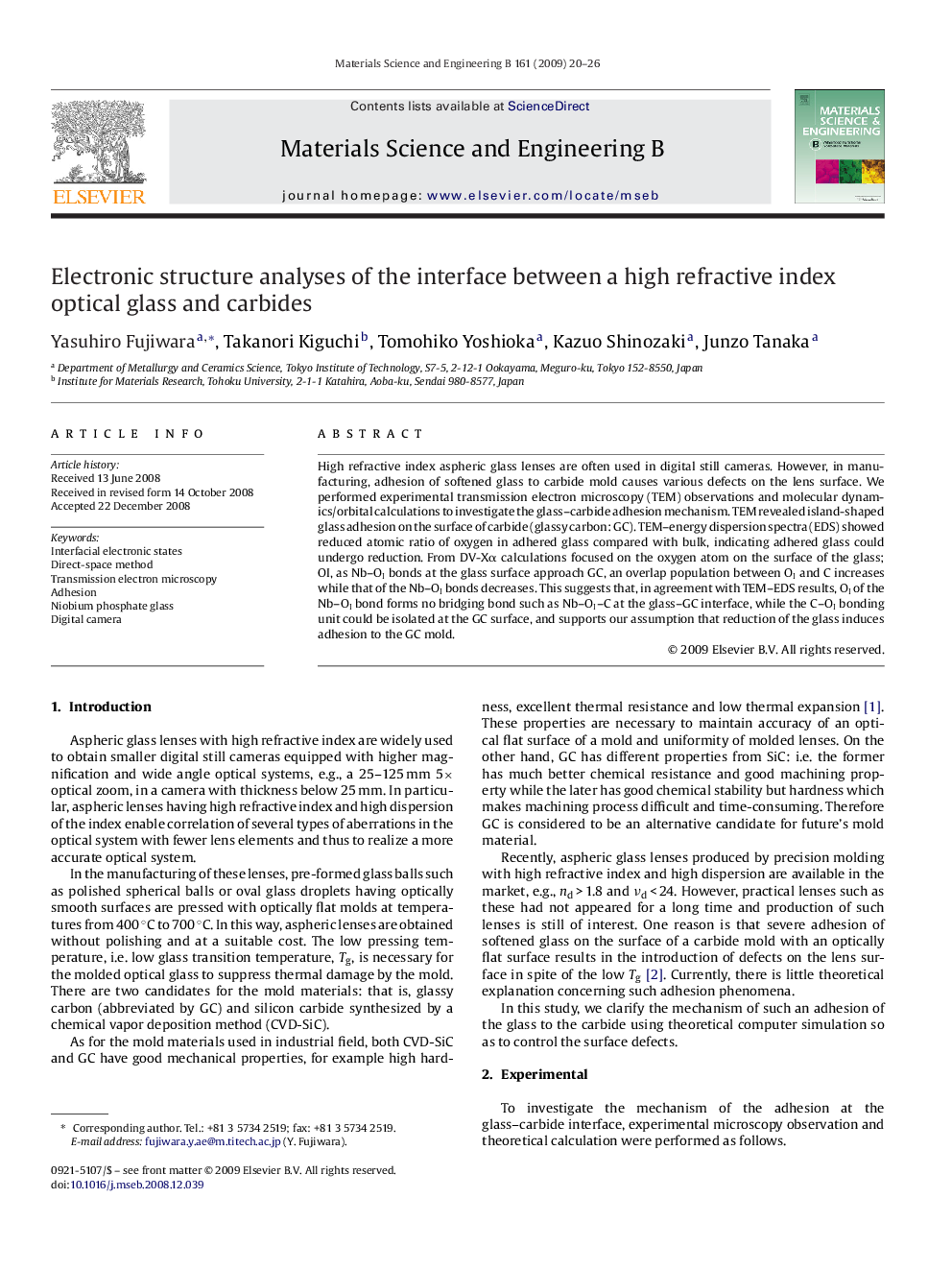| Article ID | Journal | Published Year | Pages | File Type |
|---|---|---|---|---|
| 1530798 | Materials Science and Engineering: B | 2009 | 7 Pages |
High refractive index aspheric glass lenses are often used in digital still cameras. However, in manufacturing, adhesion of softened glass to carbide mold causes various defects on the lens surface. We performed experimental transmission electron microscopy (TEM) observations and molecular dynamics/orbital calculations to investigate the glass–carbide adhesion mechanism. TEM revealed island-shaped glass adhesion on the surface of carbide (glassy carbon: GC). TEM–energy dispersion spectra (EDS) showed reduced atomic ratio of oxygen in adhered glass compared with bulk, indicating adhered glass could undergo reduction. From DV-Xα calculations focused on the oxygen atom on the surface of the glass; OI, as Nb–OI bonds at the glass surface approach GC, an overlap population between OI and C increases while that of the Nb–OI bonds decreases. This suggests that, in agreement with TEM–EDS results, OI of the Nb–OI bond forms no bridging bond such as Nb–OI–C at the glass–GC interface, while the C–OI bonding unit could be isolated at the GC surface, and supports our assumption that reduction of the glass induces adhesion to the GC mold.
